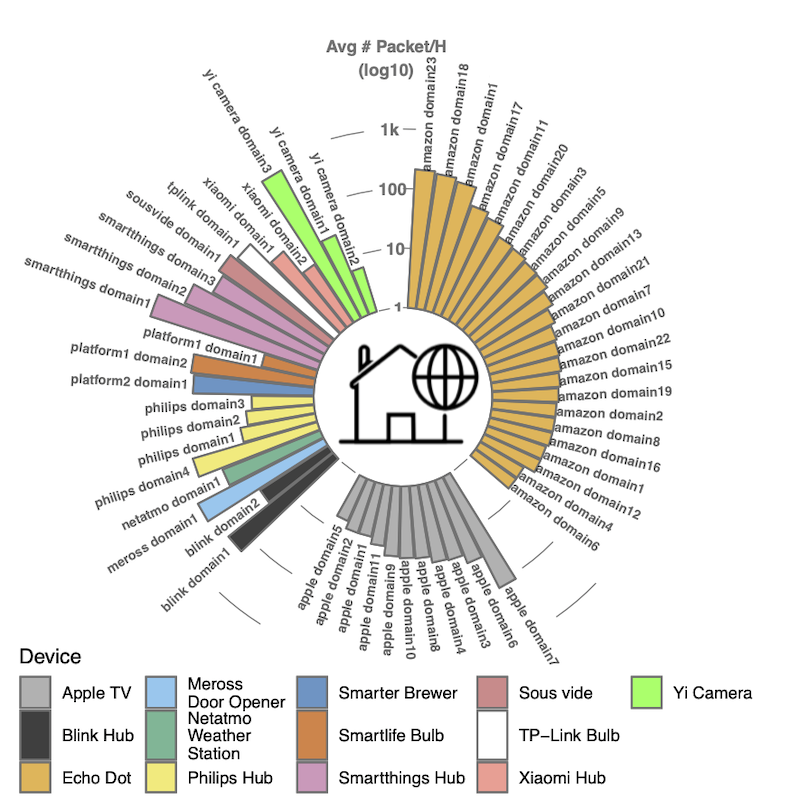This site contains the signatures of the IoT devices accompanying the paper "A Haystack Full of Needles: Scalable Detection of IoT Devices in the Wild" in proceedings of the ACM Internet Measurement Conference 2020 (IMC 2020), October 2020, Virtual Event.
The official paper can be found at https://moniotrlab.ccis.neu.edu/imc20/.
We first identify the set of IoT domains that can be monitored (detection level). We then generate the rules for detecting IoT devices (detection rules).
detection_level/- Data for Section 4.3.1 Determining IoT Detection Level - Depending on the set of IoT services contacted by the devices we generate device detection rules at three granularity levels: (i) Platform-level, (ii) Manufacturer-level, and (iii) Product-level. Considering the diverse range of products from Amazon and Samsung, we release the list of domains/ports for those device separately, for a total of three files:- alexa_enabled: for devices using Alexa voice service
- samsung_IoT: for Samsung IoT devices
- other_devices: for the remaining 32 device types
Each file contains 6 columns:
- domain: domain contacted by the device
- detection_level: super category (Platform-level, Manufacturer-level, Product-level)
- device: device name
- grouped_domain: we group (and rename) different domains associated to the same service IP on which the domains are hosted during the time period of our experiments (see section 4.2.1 of the paper for further details).
- domain_id: unique id for the grouped domain
- port: destination port
README.md- This file contains an overview of the data.imc20_logo.png- A circular bar plot of average # of packets/hour per domain.
Considering that in the wild, we can only observe standard network level features such as src/dst IP and port numbers (without packet payload), we needed to identify all associated service IPs on which the domains are hosted during the time period of our experiments. To this end, we used both the ground truth experiments (DNS queries), DNSDB, Censys, and applying additional filters.
For further details see Section 4.2 of the paper.
